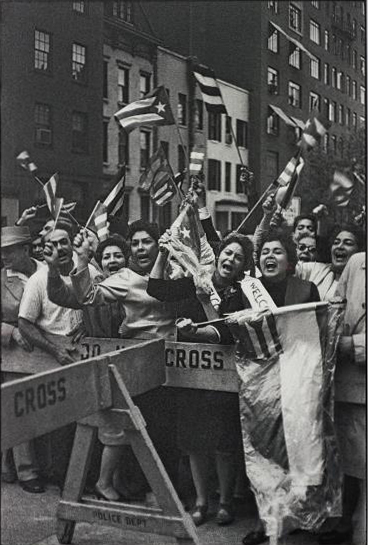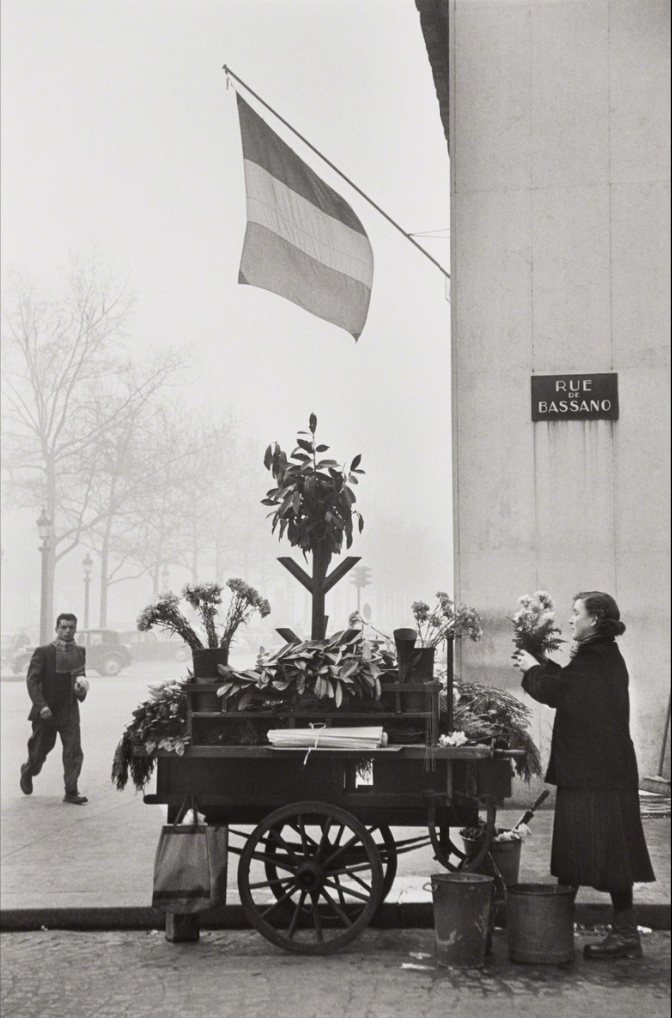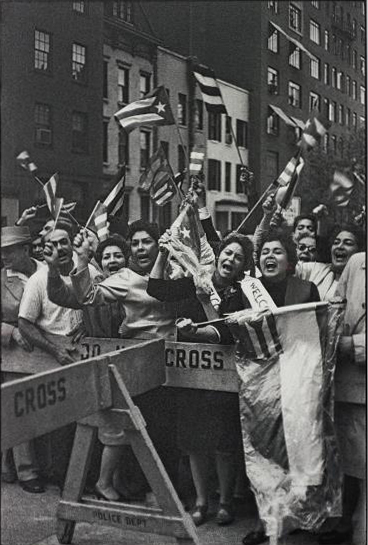Biography
Henri Cartier-Bresson (1908-2004), arguably the most significant photographer of the twentieth century, was one of the co-founders of Magnum Photos in 1947 and champion of the “decisive moment”. He brought a new aesthetic and practice to photography, initiated modern photojournalism, and influenced countless followers.
Mood Board
Image Analysis
Technical: In this image it is clear the the lighting used for this picture was used with nature lighting and the picture is in black and white due to the times he was in with taking the picture. As for the aperarture he probably had the camera set at f11 because the picture is clearly focused on all the people in the image however their is a slight blur to the buildings in the background. For the shutter speed it was set to be quick as the picture is very sharp not having any one in the image appearing to be smudged or blurred in their movements. Finally, for the ISO it was set at a low sensitivity most likely at a 50-100 as the image is focused on just the people in the image not showing any dust particles or anything else in the place in which he took the picture in
Visual: The colour of the photo is in black and white once again due to the eras in which he took the picture in, on top of that the tone appears to be fairly bright as the picture is clear in what you can see. Moreover, their is somewhat of a contrast in this image from black and white, with the buildings in the background and you can tell the image is cropped in order to have a focal point on the people who appear to be protesting.
Contextual/ Conceptual: The image shows that the people In the image appear to be protesting for a matter of an event that is happening in their country to do with the government which is a great picture that Cartier-Bresson captured and he could show the world that even in countries that are corrupt or even in poverty still fight for their rights.
Magnum Photo Agency
In 1947 Cartier-Bresson founded Magnum Photos which was a co-operative photography agency that was accompanied by other photographers such as David Chim’ Seymour, Robert Capa and George Rodger. Cartier and his fellow photographers had a realisation that photography was incredibly powerful in the use of it being a communication tool, and their agency placed them at a vanguard industry. Cartier’s objective was to cover India and China however, he ended up travelling widely for the next twenty years making assignment’s in the USA, Italy, France, Yugoslavia, Egypt, Greece, Iran, Pakistan and Indonesia making him become one of the world’s most sought after photojournalists.
One of his personal favourite trips was being able to go to Moscow as he was the first foreign professional photographer to be allowed in the USSR since the death of Stalin in 1953. With help from the locals Cartier Bresson was set about photographing daily lifestyle in his usual style of photography however, there was restriction from him taking pictures of military building’s, bridges and other “sensitive” subjects. This trip that he took aboard created an amazing series of photographs that were published in Life Magazine in 1955. His pictures where mostly taken a across her Western World which most people had little idea about what it was like living daily lives in places like the USSR.
Aside from his influential book the Decisive Moment, Cartier Bresson published over thirty further publications, with the last one being Landscape Townscape, published in 2001. He retired from his professional photography career in 1968 wanting to live out the rest of. His life with his wife, later one dying in his own home in Provence on 3 August 2004.
Comparison
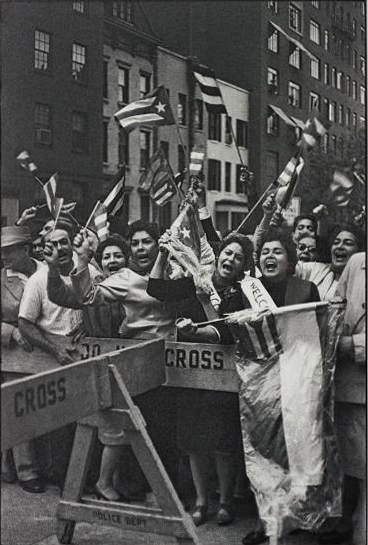
Henri Cartier-Bresson 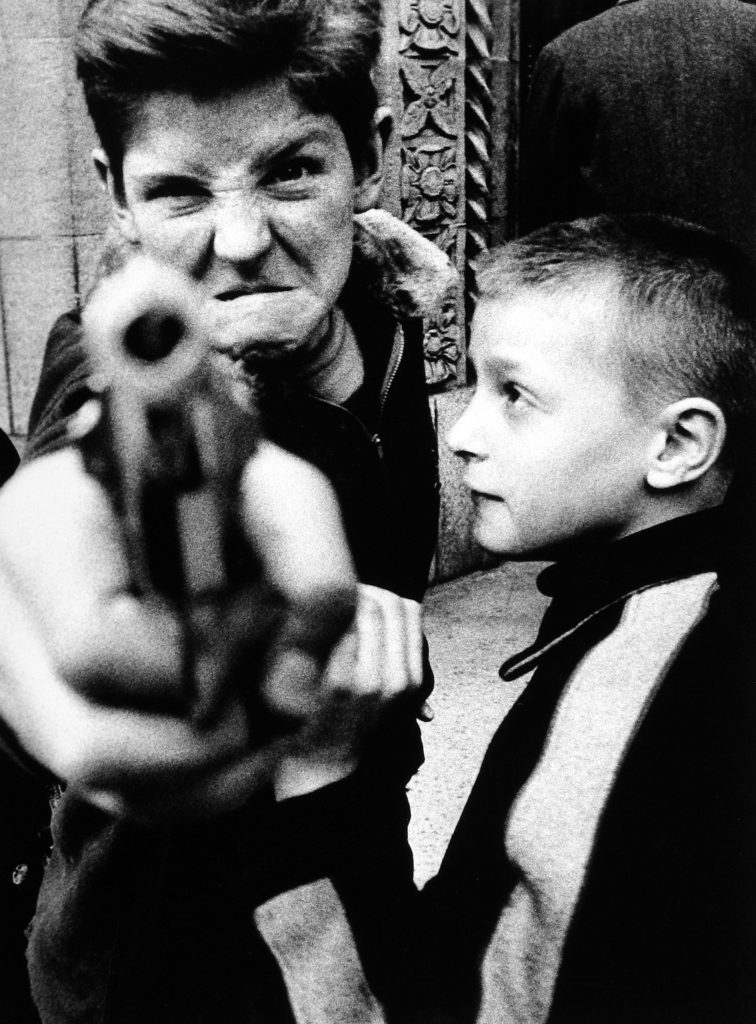
William Klein
These two pictures have comparisons from Henri and William. This is shown with the two images being in black and white having the contrast from the black and white making different figure stand out in the images also, in the images being in black and white you know that both photographers where taking pictures in similar eras. Moreover, in both images their is a focus point on it being the people in the images which leads to the effect of certain images becoming blurred like the gun in the boys hand and some of the flags that are moving in the images. Another comparison is that you can see the images have been cropped down to make the images neater. The final comparison in the images is how both images seem to have angered people in them giving the pictures a background on what they are about, like in William Kleins image, it goes to show how their was gang violence on the streets, whereas with Henri’s, you can see it is some kind of protest that has caused to anger the citizens from inequality.



